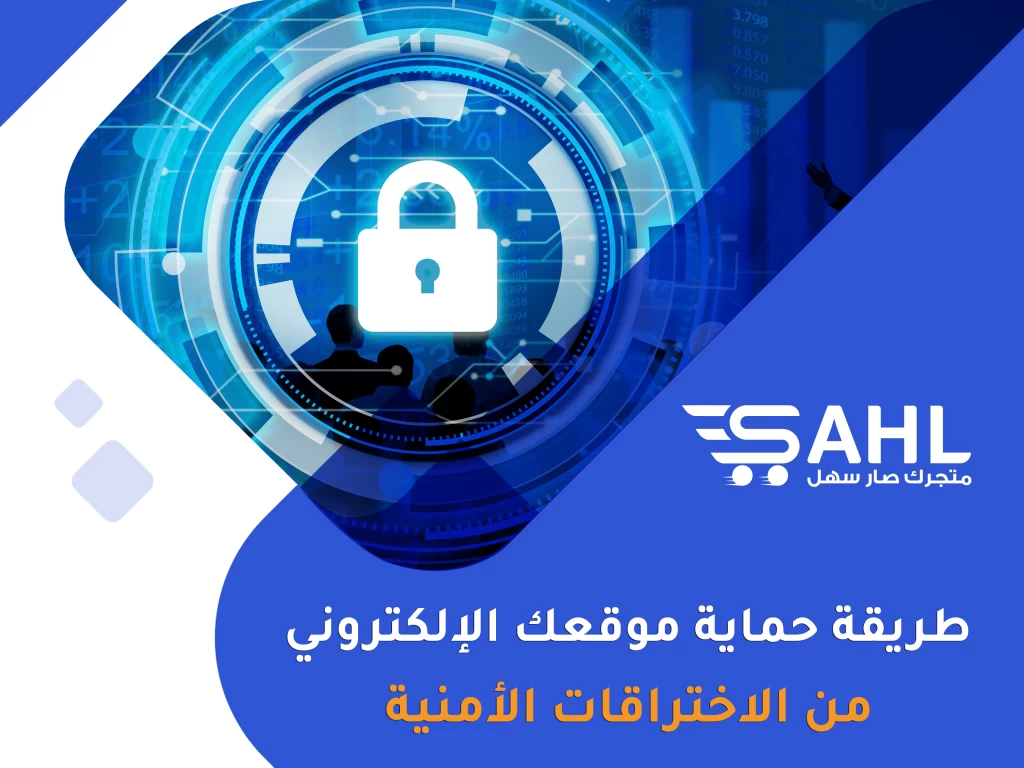Free support 24/7
Free support 24/7

With the increasing prevalence of software applications in our daily lives, the issue of security has become crucial to ensure the safety of sensitive information and data. Modern technologies and developments in the world of programming have provided tremendous opportunities to improve user experience and facilitate business, but at the same time, they have led to an increase in threats and intrusions targeting software applications. Therefore, security in programming should be a priority for developers and companies alike. In this article, we will cover some important procedures and practices to protect your software applications from threats and breaches.
1. Risk Assessment and Potential Attacks: Before proceeding with the development of your software application, you must analyze and evaluate the potential risks that your application may face. Can attackers exploit certain vulnerabilities? What types of attacks can target your app? By understanding the potential risks, you can take proactive steps to protect your application.
2. Security updates and vulnerability fixes: Security updates and vulnerability fixes are crucial to keeping your app secure. You should always be aware of the latest updates and security patches for the tools and libraries that you use to develop your application, and you should apply these updates regularly.
3. Limiting Known Attacks You may use libraries and tools to mitigate known attacks such as firewall protection, authentication, and authorization. By implementing these practices, you can reduce the chances of common attacks such as SQL Injection and Authentication Bypass.
4. Penetration and Pressure Testing: Before you release your app to the public, you must perform penetration and stress tests to identify vulnerabilities and vulnerabilities in security. Penetration testing professionals can be hired or available security testing tools can be used to analyze your application and discover potential vulnerabilities.
5. Data Encryption: The data that is exchanged and stored in your application must be properly encrypted. Using secure encryption protocols such as HTTPS to protect application connections and database encryption contributes to maintaining the confidentiality of information.
6. Code Review: Before an application is published, a security audit of the code must be performed to check for potential security vulnerabilities. This can include evaluating used variables, validating user input, and evaluating programming logic for vulnerabilities.
7. Safe Programming Instructions: Developers and development teams should be guided by safe programming instructions and principles. They have to learn how to avoid common mistakes that can lead to security vulnerabilities, such as validating entries and avoiding the use of static code.
8. User Identity Management: Providing reliable and secure user identity management helps protect the application from intrusions. Using services that authenticate and verify user identities reduces the chances of impersonation and unauthorized access.
9. Use techniques to avoid common vulnerabilities There are common programming vulnerabilities that can be vulnerabilities that attacks can exploit. Some of these vulnerabilities include Input Validation, Insecure Data Storage, and Insecure Exception Handling. You must learn these vulnerabilities and use software techniques to avoid them and prevent their exploitation.
10. Choose reliable security libraries: When using third-party software libraries and frameworks, you should be careful to choose reliable and regularly updated libraries. Using outdated or obsolete libraries can lead to security vulnerabilities that attacks can exploit. Ensure that you follow the developments of the libraries and update them when needed.
11. Securing environments: You must ensure that the environment for development, testing and production is secure. Using open source and cloud resource management tools can help provide isolated and secure environments for testing and deploying your application.
12. Training and Awareness: Security awareness among the development team and developers is essential. Provide periodic training sessions for developers to enhance their understanding of secure programming principles and current security updates. Education and awareness can contribute to reducing security errors.
13. Response to intrusions: Although all security measures are taken, a hack may occasionally occur. You should have a breach response plan that outlines the actions to take if a security breach occurs. This includes isolating the threat, recovering data, and improving security to prevent a similar breach in the future.
14. Documentation and review: Develop specific security policies and procedures for development and publication, and document them well. Having clear documentation guides teams and maintains security standards. Periodically review security policies and measures to ensure they remain effective and appropriate to current threats.
15. Follow developments in the field of security: The world of security is constantly evolving, so you must stay abreast of the latest developments and threats. Join security communities and forums and follow security news to increase your knowledge and improve security measures.
16. Follow the principle of "minimum privilege": Avoid giving applications and users more privileges than they need. Use the principle of least privilege (Least Privilege) where each entity (user or application) is granted only the privileges it needs to perform its functions properly, and this reduces the possibility of exploit attacks.
17. Multi-factor authentication (MFA): Implementing multi-factor authentication increases the security of applications. This technique requires users to provide additional verification information along with the password, making it difficult for attackers to gain access to the accounts even if they manage to obtain the password.
18. External Security Reviews: In addition to internal penetration tests, external security reviews can be very valuable. Approving external security reviewers to review design and code
The application can reveal unexpected vulnerabilities.
19. Session management and activity logging: Within the session management mechanisms, ensure that safe and secure sessions are implemented for users. There should be an accurate log of activities in the app, enabling you to track users' activities and detect unusual patterns that indicate hacking attempts.
20. Think about Security from the Beginning of Design: It is important that security be part of the application design process from the start. Create designs that consider security aspects, from database design to user interface design.
21. Communication with the security community: Participate in security forums and security communities to exchange experiences and knowledge with security professionals and experts. Interacting with the security community can help to learn the latest news and technologies in the field of security.
22. Reporting and responding to security issues: There should be a mechanism for reporting security issues and prompt response to such reports. Security issues must be addressed seriously and quickly to avoid attacks.
23. Continuous Evaluation and Improvement: After the application is launched, the performance and security of the application should be evaluated regularly. Use security monitoring tools and log analysis to identify unusual activity and hack attempts. Take advantage of these assessments to continuously develop and improve your security.
24. Protection from new attacks: Attack technologies are constantly evolving, so you must be ready to face new and sophisticated attacks. Stay on top of the latest security and attack trends by following security sources and news.
25. Handle user data with care: If you collect user data, you should handle it with great care. Follow privacy protection principles and comply with laws related to the protection of personal data, such as GDPR in Europe and CCPA in California.
26. Automatic Vulnerability Assessment: Use Automated Vulnerability Assessment tools to periodically scan your application and identify potential security vulnerabilities. These tools can detect common vulnerabilities and help you patch them before they cause security problems.
27. Continuous improvement of the development process: Provide feedback from attacks and vulnerabilities to the development team and improve the development process based on these experiences. Experience dealing with previous attacks enables you to improve your security strategies.
28. Comply with industry security standards: Follow industry security standards and frameworks such as the OWASP Top Ten to identify best practices in security. These standards provide guidance and recommendations for protecting your application from common security vulnerabilities.
29. Constructive criticism and learning from mistakes: In the event of a security breach or attack, you must deal with the situation seriously and analyze the reasons and factors that led to it. See these experiences as opportunities to improve and learn from mistakes.
30. Be transparent with users: In the event of a security breach or breach, you must be transparent with users about the incident and the actions you have taken to address it. Providing information honestly contributes to building trust with users.
31. Third-Party Verification: When you include external resources in your application, such as JavaScript libraries or APIs, ensure that those sources are secure and trusted. These sources may be a vulnerability for attacks to exploit, so you should review them and ensure they are updated regularly.
32. Edge Security Management: Not only is securing the application itself important, but also securing edges such as firewalls and routers. Consider securing the infrastructure that supports the operation of the application.
33. Periodic Reviews of Security Policies: In the course of evaluating the security of applications, you should regularly review security policies and procedures. Changes in security conditions and requirements may occur, so you must be flexible in adjusting policies and practices as needed.
34. Commitment to Strong Encryption: Use strong encryption techniques to protect users' data and sensitive information. Make sure to use recognized and trusted encryption protocols for maximum protection.
35. Check the sources of attacks: Try to monitor and analyze the sources and patterns of attacks. Do the attacks come from a specific place or at a specific time? Checking attack sources can help identify hacking patterns and attempts.
36. Follow the principles of the DevSecOps process: Ensure the security of the application by integrating security into the software development process itself, which is known as "DevSecOps". This includes incorporating security testing and security auditing into the development and deployment phases.
37. Provide regular security updates to your users: Once your app is published, you must continue to provide security updates to your users. These updates correct exploits and vulnerabilities discovered after the initial release.
38. Check Security Certificates: If you carry out financial or sensitive transactions, you must ensure that your application holds the appropriate security certificates, such as PCI DSS certificates if you handle credit card information.
39. Use of security experts: In some cases, it may be necessary to use specialized security experts to provide a comprehensive assessment of the security of your application and provide advice specific to its circumstances.
40. Cultivate a culture of security: Finally, encourage a culture of security within the development team and the entire company. Making security a part of the corporate culture ensures that security is thought of in all aspects of the business.
Conclusion: Securing your software applications from threats and breaches is vital to ensuring the safety of users and protecting their data. By adopting a comprehensive set of security practices, you can provide a reliable and secure experience for your users and maintain your app and company reputation.
You have to remember that security is an ongoing and evolving process. You must stay abreast of the latest security threats and technologies and adapt your actions based on these developments. Investing in security pays off by protecting the application and information and allowing for growth sustainable.
By adhering to security standards and rigorously applying these practices, you can build software applications that have a good reputation in the user community and contribute to keeping them safe and secure on the Internet.

وش وضع الخبرة التقنية هل هي شرط أساسي ولا تقدر تبدأ بدونها نجاوبك بالتفصيل في هالمدونة

قبل لا تطلق متجرك الإلكتروني لازم تختبره بشكل كامل عشان تتأكد إنه شغّال بدون مشاكل
You can create your store easily